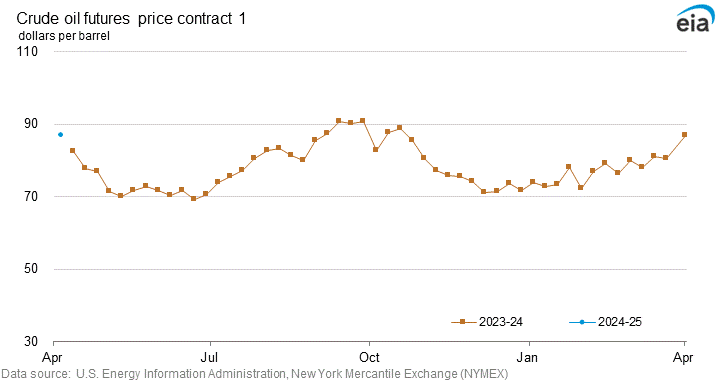Crude prices rise in response to positive economic data. Crude oil prices rose on Friday as the US reported higher personal spending and new home sales. However, crude oil gains were offset by a rally in the dollar index to a 1-1/2 month high and a sell-off in the S&P 500 to a 5-week drop. Weighing on economic confidence and the outlook for energy demand.
Crude Fundamental Analysis
Increased Libyan crude exports are a bearish component of crude prices. According to Bloomberg, Libya intends to export 1.05 million barrels a day of crude in Feb. A 2.5% increase year on year. Soaring crude demand in India, which is the world’s 3drlargest crude buyer, boosts prices.
According to India’s oil ministry, intake of oil products will increase by 4.9 percent year on year to a staggering 233.8 MT over the following 12 months.
Crude has a significant Chinese component.
Recent Chinese news indicates an uneven economic recovery, which is bad news for energy demand.
China’s car production and sales fell more than 30% year on year in Jan. Furthermore, China’s housing market remains in a slump, with Jan home sales for the 100 best Chinese developers. Falling -33 percent year on year.
On the plus side, rising Chinese air travel helps to support fuel demand and crude prices. From Jan 7 to Feb 15, the Civil Aviation Administration of China (CACC) reported 55.2 million air passenger trips in China. Up +39percent from the same period last year and 76 percent of the scale in 2019.
The OPEC Influence
On February 1, the OPEC+ Joint Ministerial Monitoring Committee recommended maintaining crude production rates. As the oil market awaits clarity on Chinese demand and Russian crude supplies.
On February 1, the OPEC+ Joint Ministerial Monitoring Committee recommended maintaining crude production rates. As the oil market awaits clarity on Chinese demand and Russian crude supplies.
According to Goldman Sachs, OPEC+ will only begin to reverse its supply cutbacks, which are presently at around 2 million bpd, in the second period of this year. When speeding up demand will stiffen the market. In Jan, OPEC crude output declined by 60,000 barrels a day to 29.12 million barrels per day.
Saudi Arabian Energy Minister Abdulaziz bin Salman said last Thursday that the OPEC+ alliance intends to keep the Oct oil deal in place for the rest of the year.
Furthermore, UAE Energy Minister Suhail Al Mazrouei stated last Monday that, despite Russia’s intention of lowering crude output, world oil markets are aligned and OPEC+ producers are not obligated to involve.
U.S. crude oil production in the week ended Feb 17 was unchanged w/w at a 2-3/4 year high of 12.3 million bpd, which is just 0.8 million bpd (-6.1%) underneath the Feb-2020 record-high of 13.1 million bpd.
The Rig count
Baker Hughes announced on Friday that engaged U.S. oil rigs dropped by -7 rigs in the week ended February 24 to 600 rigs.
Baker Hughes announced on Friday that engaged U.S. oil rigs dropped by -7 rigs in the week ended Feb 24 to 600 rigs. The amount of operational oil rigs in the United States has more than tripled since a 17-year low of 172 rigs in Aug 2020. Indicating an increase in the crude oil extraction potential in the United States.
The EIA reported higher-than-expected seasonal inventories.
According to the EIA report released on Thursday, (1) US crude oil stockpiles as of Feb 17 were +9.1percent higher than the seasonal 5-year average. Gasoline inventories were -5.4 percent lower than the seasonal 5-year average, and, distillate inventories were -12.4% lower than the seasonal 5-year average.
Crude oil futures and calculated contract prices (dollars/ barrel)










